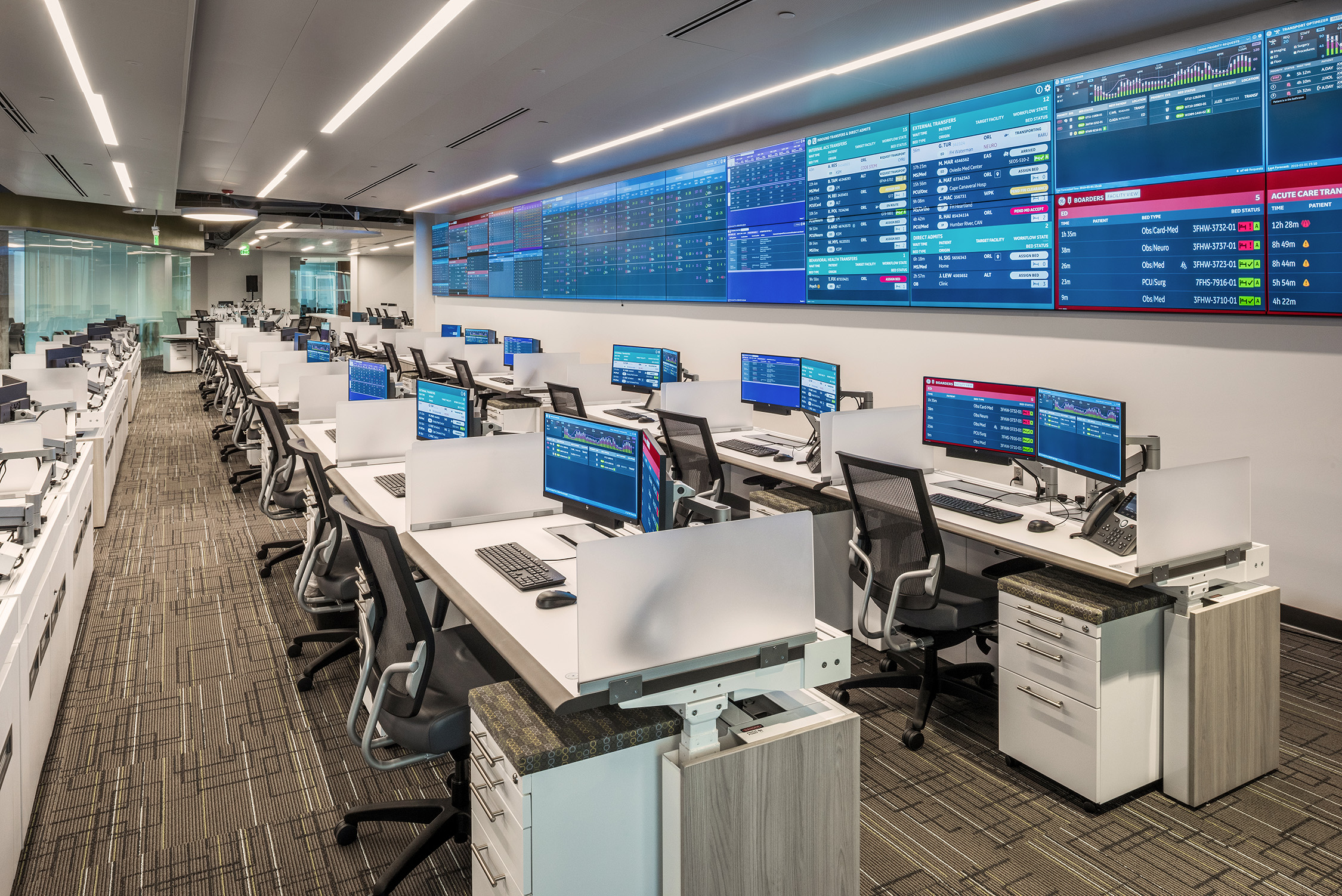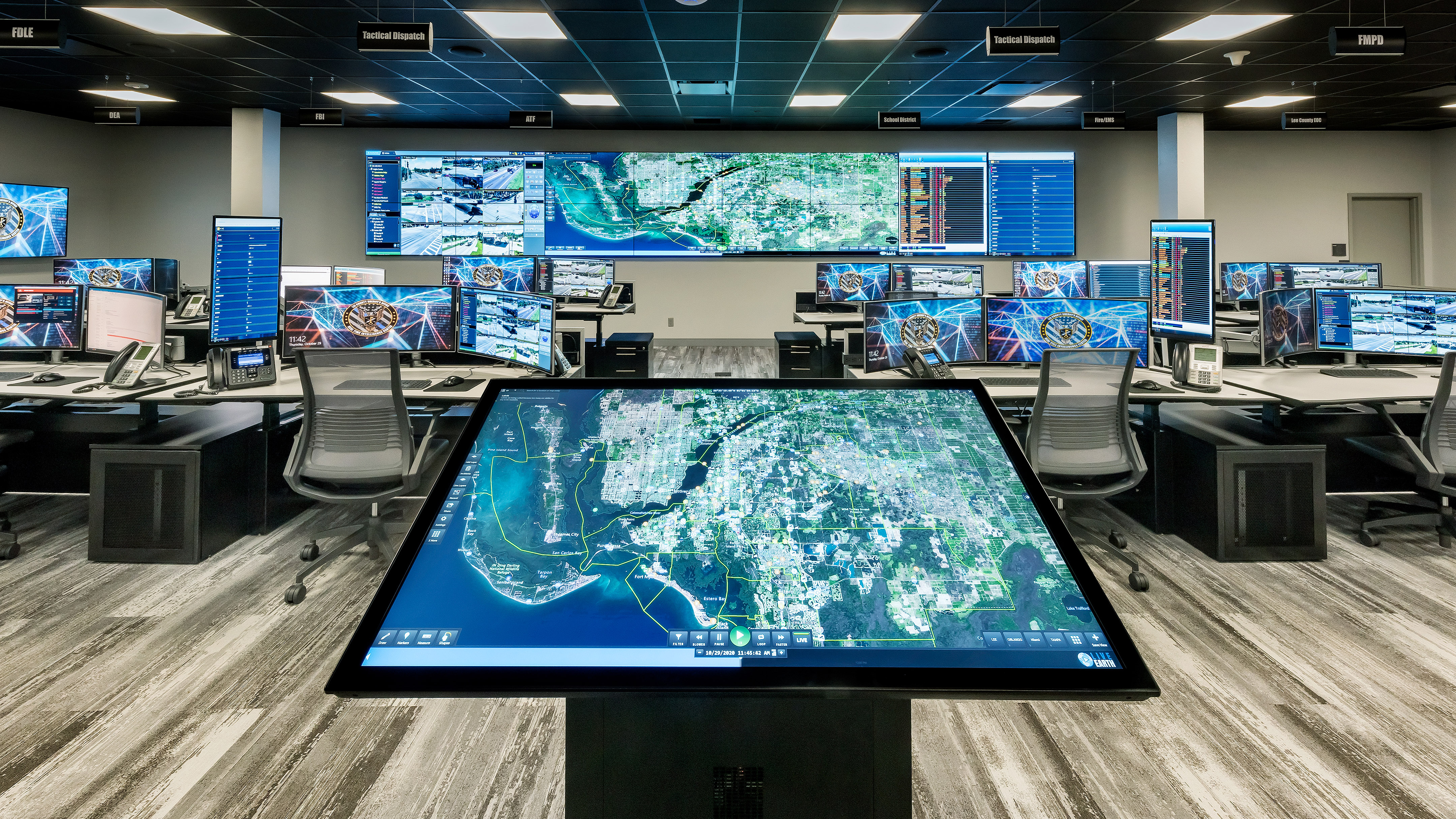Command and control center personnel haven’t had an easy time of it during the pandemic year, and efforts to mitigate virus transmission—the very threat they are attempting to manage—have made their job even more difficult. The threat strikes at the core of their purpose.
An organization’s mission-critical personnel gather in command and control centers to access to the real-time data they need to monitor and control situations ranging from normal day-to-day operations to emergencies. But when people must remain distanced from each other because of pandemic precautions, forcing many to work remotely, how can command and control stay relevant?

Command and control centers have been busier than ever during the pandemic, according to Heather Conover, director of global business development at Constant Technologies. In addition to applications including managing corporate logistics, running E-911 services, and monitoring statuses for utilities, some are now overseeing COVID-19 monitoring, tracking vaccine shipments and organizing food deliveries to homes.
“Like any industry, command and control has had to pivot throughout the COVID-19 pandemic,” said Conover. “If anything, these centers have become even more crucial during the pandemic, as everything from public safety to increased cybersecurity risks have been pushed to the forefront. Ultimately these rooms deal with risk management, and the COVID-19 pandemic has been the largest-scale risk management response in recent history.”

While the need for command and control is settled science, the pandemic response has challenged how these centers operate. Social distancing protocols reduced the number of people who could work in these centers simultaneously—in some cases, down to 10 percent of their usual capacity, said John Hickey, senior director of R&D and KVM systems at Black Box—causing organizations to pivot quickly to allow staff to work remotely. This trend of de-densification is accomplished in 24/7 centers by rotating personnel between the office and home. COVID-related health safeguards include constructing acrylic partitions between workstations and having operators wear masks.
Meanwhile, security measures governing the inflow and outflow of information from command and control rooms are following an opposite trend; the risk of cyberthreats increases as the number of locations increases.
“Working from a home site added the need for extra layers of security, as typically the home was not defined as part of the security infrastructure for the control room,” said Hickey. “VPNs and other technologies were added to allow secure access to the normal site, allowing an operator to work securely from home.”
[3 Ways to Increase Productivity in the Control Room]
Naturally, AV over IP technology is playing a big role in this transition by facilitating remote sharing, so a person working from home or a satellite campus sees the same information as an operator at the command and control center.

“We’re seeing multiple-site setups where people are working from home or at another location, but everything from that central command and control location is shared among everyone,” said Mark Bohs, director of sales for the Americas at Datapath. “With the proliferation of AV over IP technology, we’re seeing more data requirements for the command and control centers, and this allows us to push content to other places outside of the command and control center.”
KVM technology solutions are helping solve related issues of remote access. For example, adding a KVM switch to the control room can eliminate the need for multiple keyboards and peripherals by allowing a single keyboard and mouse to control all the computers.
“With high-performance KVM over IP systems, the computers can be hundreds or thousands of miles away,” said Hickey. “The user simply selects the target computer from an on-screen menu, which may have hundreds of different targets. Over the last few years, KVM systems were enhanced to allow these to be virtual machines as well as physical machines. The key trend has been to move these systems—KVM and AV included—to operate over IP networks.”
[The Integration Guide to AVoIP]
Ongoing AV/IT convergence is the backbone that enables it all, bringing the benefit of real-time collaboration with other operators in the room and with other locations, Conover noted. “While not completely new to the market, technologies like streaming and videoconferencing are seeing growth in the command and control environment, particularly after this last year,” she said. “The real trend that we are looking at is not necessarily exciting new technology so much as ensuring that the fundamental platforms used in these mission-critical systems are deployed with the highest levels of security and functionality.”

The pandemic-related disruption of work practices and control room build-outs and retrofits over the last year gives AV integrators an opportunity to enter or strengthen their presence in the command and control room market, Hickey said.
“There will be an increasing move to high-performance KVM over IP and AV over IP solutions, with traditional matrix systems moving into the legacy category,” Hickey predicted. “AV integrators with good IP networking skills will be able to find new ways to design and scale systems for customers. The addition of remote working adds the need for enhanced, secure remote access and data control design to keep data secure.”
Bohs added that the overall market has held up well during the COVID-19 pandemic, and integrators who were perhaps more focused on traditional digital signage before the pandemic are seeing the opportunities with command and control.
[The Integration Guide to AV in a Post-COVID-19 World]
“A lot of the key components that they’re used to—hanging screens, running cables, putting together video walls—a lot of that still applies to command and control; it just brings some other disciplines into the mix,” said Bohs. “Most of the command and control room environments today need to be dynamic and they have to be able to change. There’s lot of collaboration going on, too. A lot of that [uses] skills they’re already using.”
Still, integrators who want to move into the market have other factors to consider. Downtime isn’t an option in command and control, said Conover, and integrations require highly specific expertise. It’s a space where literal life and death decisions are made every day, and it takes skill and a thorough understanding of available and emerging (but proven) technologies to successfully serve the market.
“The last year has really highlighted the importance of remote collaboration and the need to share rapidly changing data with key decision makers,” said Conover, “[but] it’s added another layer of complexity to an environment that’s already known for challenging and demanding requirements. The solutions needed for a command and control center are beyond the capabilities of do-it-yourself. The challenges of the last year have, if anything, made the need to have a highly functioning command center more important—and partnerships with skilled integrators are needed to make that happen.
“COVID-19 put reaction time and efficiency to the test,” Conover added. “Moving forward, it is clear that organizations with highly functional command and control rooms are best positioned to deal with the unexpected.”
Click here to read more stories from the May 2021 issue of SCN.
